
How to Use Loudspeaker: Examples, Pinouts, and Specs
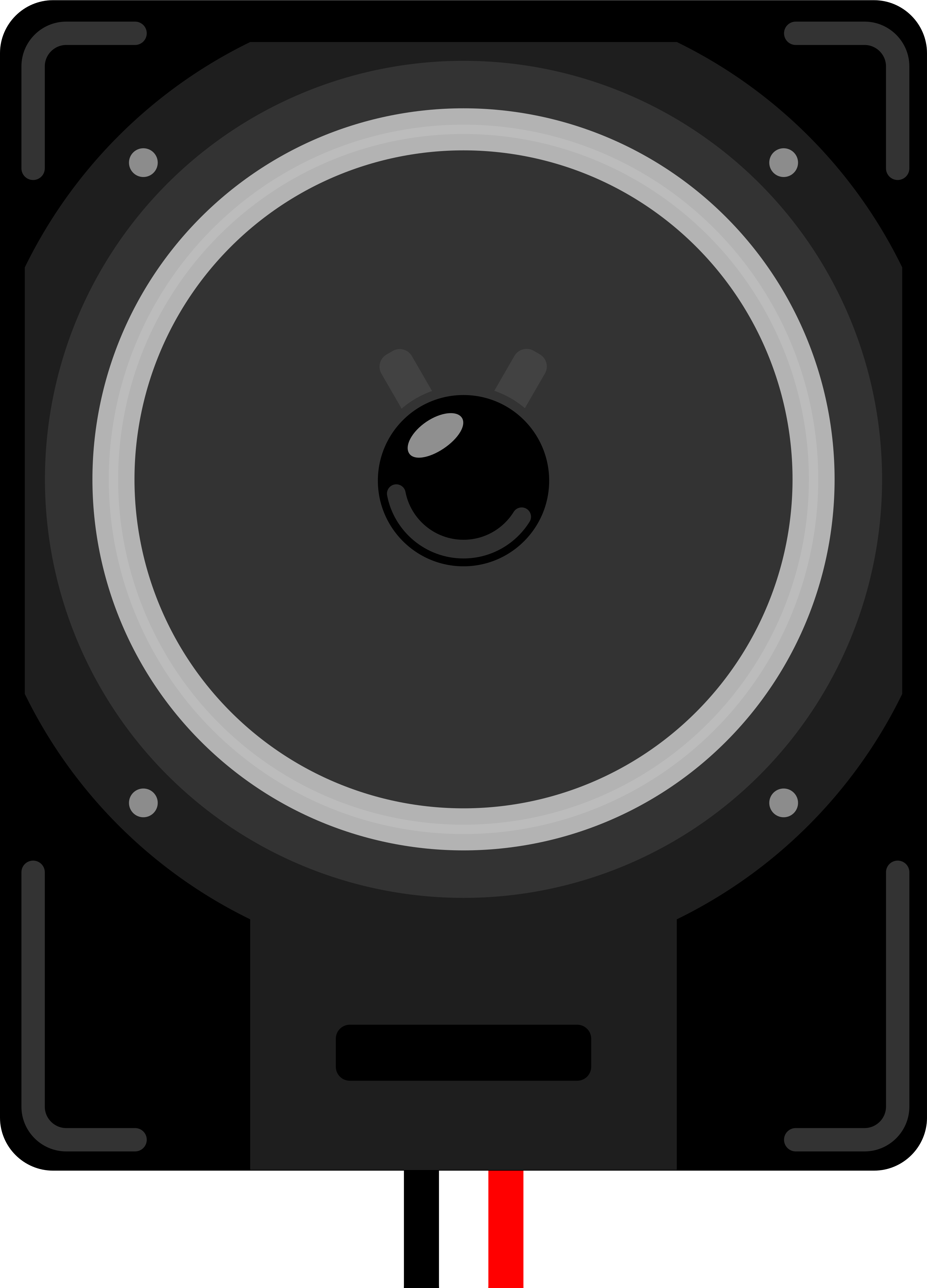
 Design with Loudspeaker in Cirkit Designer
Design with Loudspeaker in Cirkit DesignerIntroduction
A loudspeaker, commonly referred to as a speaker, is an electroacoustic transducer designed to convert electrical signals into audible sound. Loudspeakers are ubiquitous in modern technology, found in devices ranging from simple alarm clocks to complex public address systems. They are essential components in home theaters, car audio systems, smartphones, and many other applications where sound output is required.
Explore Projects Built with Loudspeaker
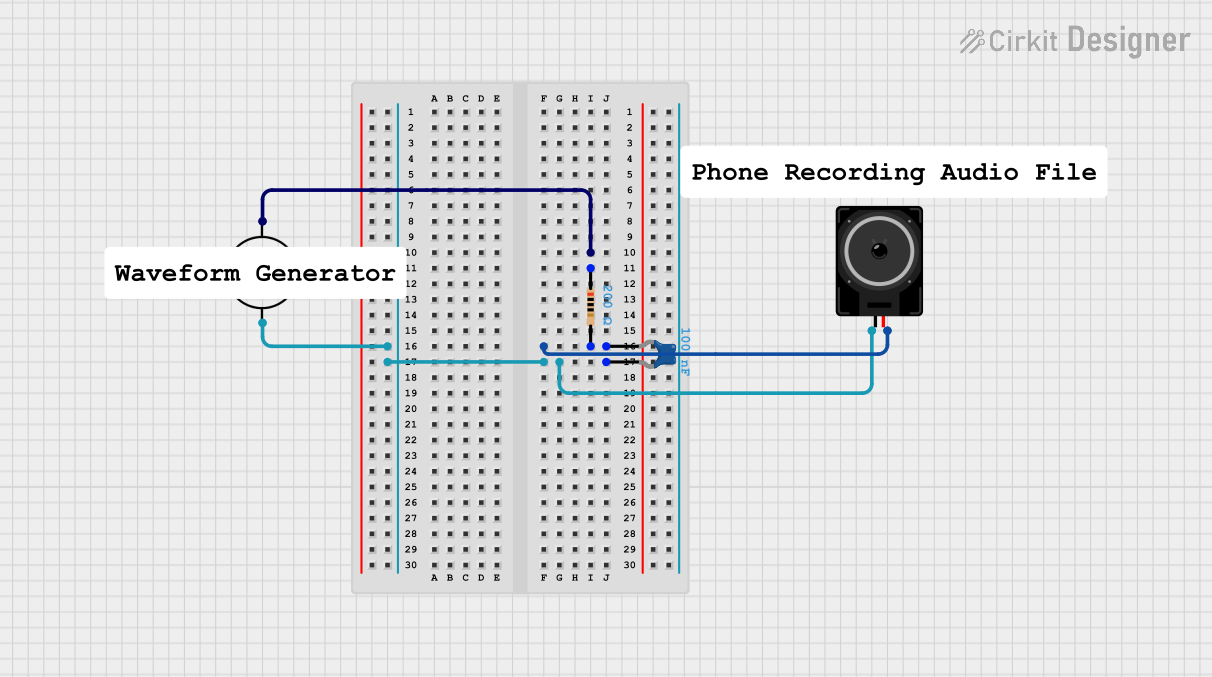
 Open Project in Cirkit Designer
Open Project in Cirkit Designer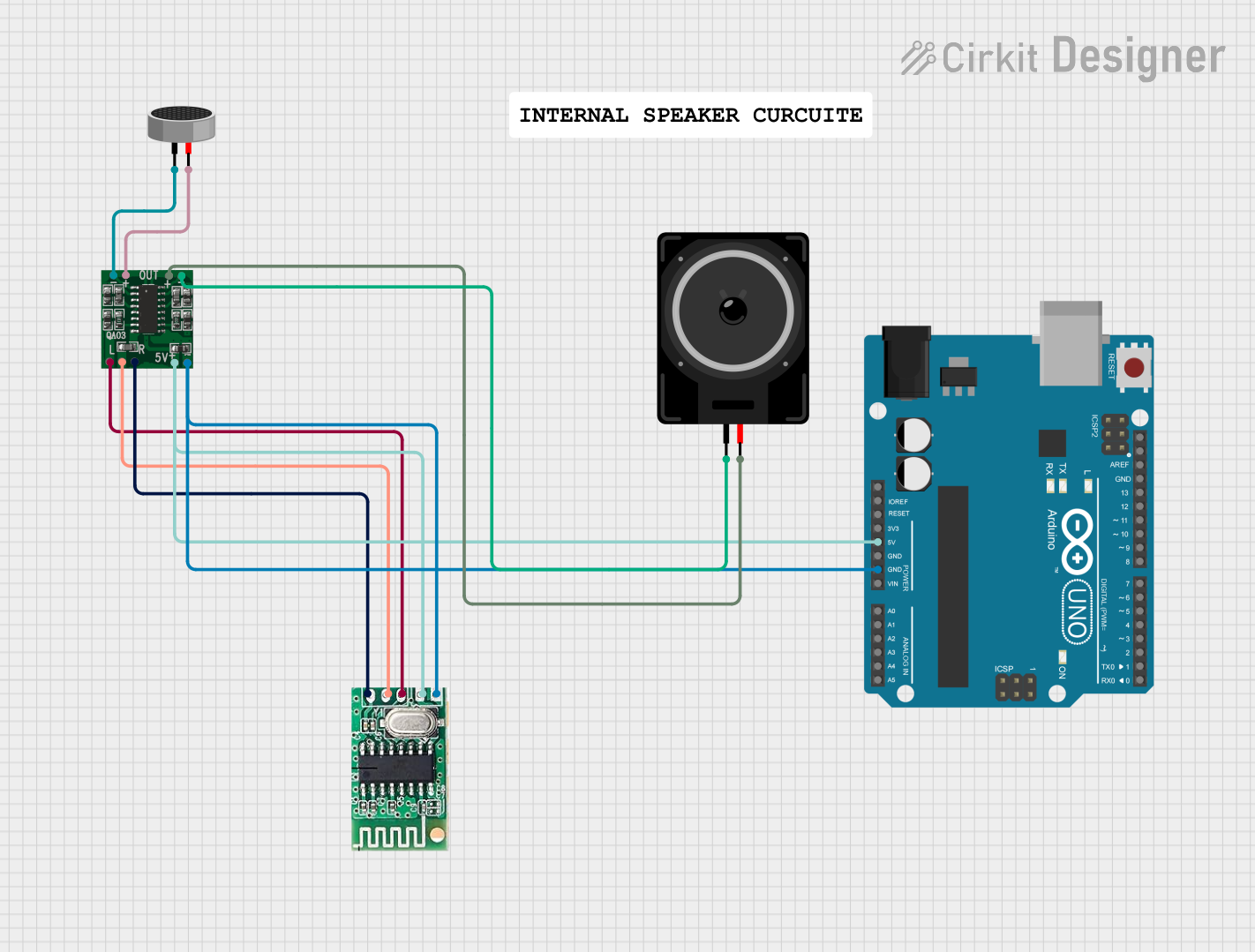
 Open Project in Cirkit Designer
Open Project in Cirkit Designer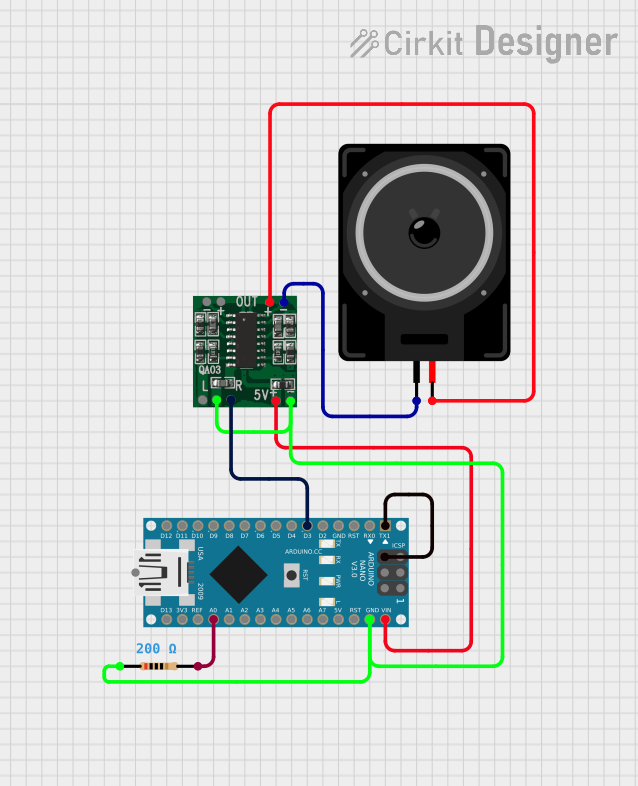
 Open Project in Cirkit Designer
Open Project in Cirkit Designer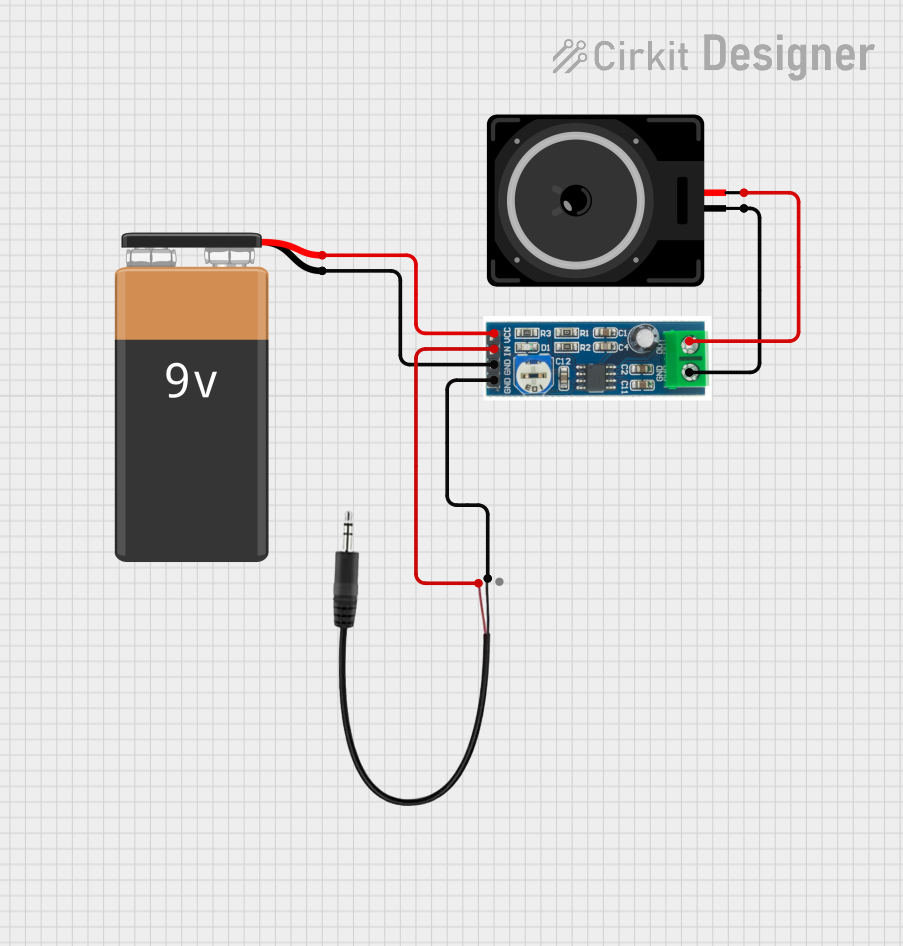
 Open Project in Cirkit Designer
Open Project in Cirkit DesignerExplore Projects Built with Loudspeaker

 Open Project in Cirkit Designer
Open Project in Cirkit Designer
 Open Project in Cirkit Designer
Open Project in Cirkit Designer
 Open Project in Cirkit Designer
Open Project in Cirkit Designer
 Open Project in Cirkit Designer
Open Project in Cirkit DesignerTechnical Specifications
General Specifications
- Type: Dynamic loudspeaker
- Impedance: Typically 4, 8, or 16 ohms
- Frequency Response: Varies with design, commonly 20 Hz to 20 kHz
- Sensitivity: Expressed in dB SPL at 1W/1m, varies with design
- Power Handling: Rated in watts (W), varies with size and design
Pin Configuration and Descriptions
| Pin Number | Description |
|---|---|
| 1 | Positive Terminal (+) |
| 2 | Negative Terminal (-) |
Usage Instructions
Integration into a Circuit
To use a loudspeaker in a circuit, follow these steps:
- Identify the Impedance: Ensure the loudspeaker's impedance matches the output impedance of the amplifier to maximize power transfer.
- Connect the Terminals: Connect the positive terminal of the loudspeaker to the positive output of the amplifier, and the negative terminal to the negative output.
- Power Considerations: Do not exceed the rated power handling of the loudspeaker to avoid damage.
Best Practices
- Enclosure Use: For optimal sound quality, mount the loudspeaker in an appropriate enclosure to enhance the acoustic response.
- Avoid Distortion: Ensure the input signal is clean and free of distortion to prevent damage to the loudspeaker.
- Crossover Networks: For multi-driver systems, use crossover networks to direct appropriate frequencies to each loudspeaker.
Troubleshooting and FAQs
Common Issues
- Distortion: If the sound is distorted, check the input signal level and reduce it if necessary.
- No Sound: Verify connections and ensure the amplifier is functioning correctly.
- Low Volume: Ensure the amplifier has sufficient power for the loudspeaker and that the volume control is set appropriately.
FAQs
Q: Can I connect multiple loudspeakers to one amplifier output? A: Yes, but ensure the total impedance is within the amplifier's capability by wiring them in series or parallel appropriately.
Q: What happens if I exceed the power rating of the loudspeaker? A: Exceeding the power rating can cause permanent damage to the loudspeaker, including burnt voice coils or damaged diaphragms.
Q: How can I improve the bass response of my loudspeaker? A: Use a properly designed enclosure and consider adding a subwoofer for lower frequencies.
Example Arduino UNO Connection
Here's a simple example of how to connect a loudspeaker to an Arduino UNO to produce a tone.
// Define the speaker pin
const int speakerPin = 9;
void setup() {
// Initialize the speaker pin as an output
pinMode(speakerPin, OUTPUT);
}
void loop() {
// Produce a 1kHz tone for 1 second
tone(speakerPin, 1000, 1000);
delay(1500); // Wait for 1.5 seconds
// Note: The tone() function generates a square wave of the specified frequency
// (and 50% duty cycle) on a pin. A duration can be specified, otherwise the
// tone will continue until a noTone() is called.
}
Remember to connect the positive terminal of the loudspeaker to the speakerPin and the negative terminal to the GND pin on the Arduino UNO. Ensure the loudspeaker's power rating is suitable for the output provided by the Arduino pin.